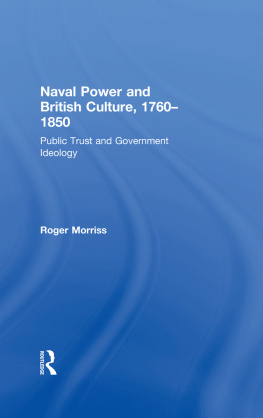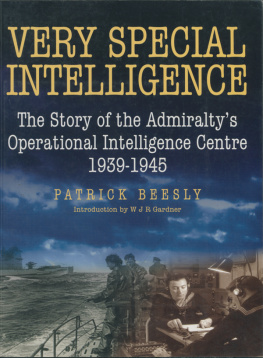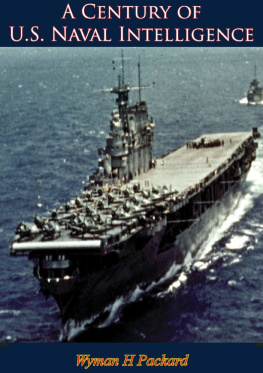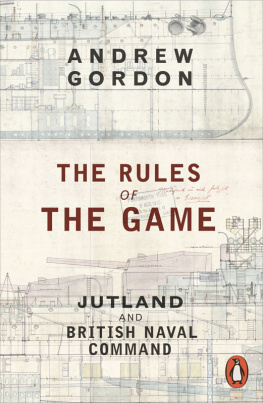
BRITISH NAVAL INTELLIGENCE
To all who contributed to British naval intelligence through the twentieth century
Not by rambling operations, or naval duels, are wars decided, but by force massed and handled in skilful combination.
A T Mahan, Sea Power in its Relations to the War of 1812
BRITISH NAVAL INTELLIGENCE
THROUGH THE
TWENTIETH CENTURY
ANDREW BOYD
FOREWORD BY ANDREW LAMBERT
Copyright Andrew Boyd 2020
First published in Great Britain in 2020 by
Seaforth Publishing,
A division of Pen & Sword Books Ltd, 47 Church Street,
Barnsley S70 2AS
www.seaforthpublishing.com
British Library Cataloguing in Publication Data
A catalogue record for this book is available from the British Library
ISBN 978 1 5267 3659 8 (HARDBACK)
ISBN 978 1 5267 3660 4 (EPUB)
ISBN 978 1 5267 3661 1 (KINDLE)
All rights reserved. No part of this publication may be reproduced or transmitted in any form or by any means, electronic or mechanical, including photocopying, recording, or any information storage and retrieval system, without prior permission in writing of both the copyright owner and the above publisher.
The right of Andrew Boyd to be identified as the author of this work has been asserted by him in accordance with the Copyright, Designs and Patents Act 1988.
Pen & Sword Books Limited incorporates the imprints of Atlas, Archaeology, Aviation, Discovery, Family History, Fiction, History, Maritime, Military, Military Classics, Politics, Select, Transport, True Crime, Air World, Frontline Publishing, Leo Cooper, Remember When, Seaforth Publishing, The Praetorian Press, Wharncliffe Local History, Wharncliffe Transport, Wharncliffe True Crime and White Owl
Maps by Peter Wilkinson, diagrams by Stephen Dent Typeset by Mac Style
List of Maps and Diagrams
1 Jutland movements of the British and German fleets during the night of 31 May/1 June 1916
2 Admiralty diagram of the OIC during the Munich crisis of October 1938
3 Naval Intelligence Division in 1943
4 Soviet maritime defence zones from the early 1980s
List of Illustrations
The plate sections are between pages 296297 and 552553.
Admiral of the Fleet Sir John Fisher in 1915
Captain Sir Mansfield Cumming, first Chief of the Secret Intelligence Service
The secret agent Hector Bywater in 1909
Captain William Reginald Hall in 1914, before becoming Director of Naval Intelligence
Sir Alfred Ewing, head of Room 40, in 1915
Thringen firing on Black Prince Jutland night action
A E W Mason in 1915, Halls most important agent
Nigel de Grey, Room 40 cryptographer
Sir William Wiseman, Secret Intelligence Service representative in America, 19151918
Alastair Denniston, Head of the Government Code and Cipher School, in 1939
Alfred Dillwyn Dilly Knox, leader of the British Enigma attack in the late 1930s
The Secret Intelligence Service agent TR16s report on the Battle of Jutland Rear Admiral Sir Hugh Sinclair, Chief of the Secret Intelligence Service, 19231939
Vice Admiral Sir William James, Deputy Chief of Naval Staff, in 1936
Vice Admiral John Godfrey, Director of Naval Intelligence, in 1942
Sidney Cotton, architect of British aerial photographic reconnaissance in the Second World War
Commander Ian Fleming, staff officer to Director of Naval Intelligence
Frank Birch, head of Bletchleys naval section from 1939
Mavis Lever, who made a crucial break into Italian naval Enigma
Hugh Foss, architect of successive attacks on Japanese naval attach systems
John Tiltman, a dominant figure in British-American SIGINT for sixty years
Room 39 wartime morning meeting
Commander Rodger Winn, head of the Admiralty submarine tracking room, 19411945
Captain Alan Hillgarth as naval attach in Madrid
Aerial photograph of the German battlecruiser Scharnhorst at Kiel, June 1942
Sinking of Scharnhorst , 26 December 1943
Rear Admiral Edmund Rushbrooke, Director of Naval Intelligence, 19421946
Next page









